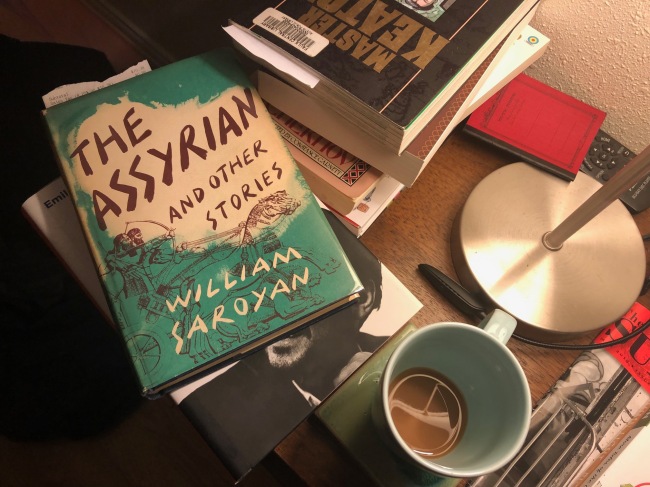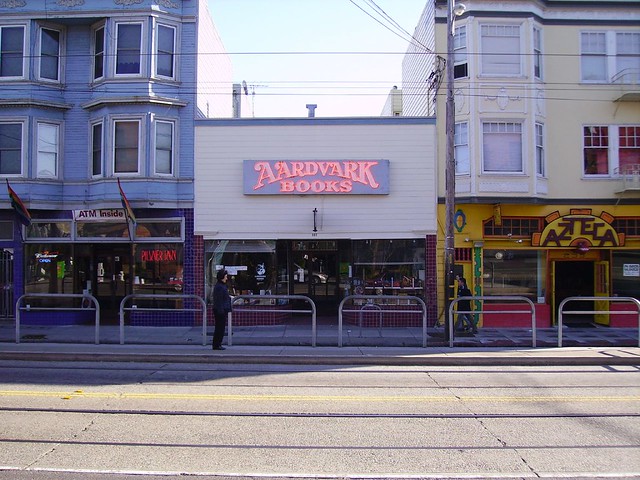 Monday night I switched off the TV, put on a Chet Baker record, and lay back on the sofa to read. Do you know what I picked up? William Saroyan. I’m sure he was on my mind because of our upcoming trip to San Francisco. All I know is that I felt drawn to his stories again. I found my copy of The Assyrian on the top shelf and inside I had left a slip of paper where I left off last year or the year before. Then I leaned back into the cushions and read two stories, “The Theological Student” and “The Plot.”
Monday night I switched off the TV, put on a Chet Baker record, and lay back on the sofa to read. Do you know what I picked up? William Saroyan. I’m sure he was on my mind because of our upcoming trip to San Francisco. All I know is that I felt drawn to his stories again. I found my copy of The Assyrian on the top shelf and inside I had left a slip of paper where I left off last year or the year before. Then I leaned back into the cushions and read two stories, “The Theological Student” and “The Plot.”
What is it about his voice and his subject matter? Tales of growing up in Fresno, stories of his boyhood and his Armenian family, the uncles, brothers, and cousins. Then there are other stories about his days as a penniless writer in San Francisco, pecking away on a typewriter in his room on Carl Street, and whiling away the hours in the bars South of Market.

There is a rhythm to his sentences. Something about the cadence, a particular sense of flow. I know I’m drawn to the warmth and the humor of these stories. But there is also a directness that can be unnerving. He doesn’t flinch or cushion the blow when he wants to take us somewhere dark. I’m thinking of “The Daring Young Man” and that down on his luck kid who starves to death. Or the slurs and disdain of the schoolteacher in “The Theological Student.”
Monday night with Saroyan gave me the same feeling as encountering an old friend. You are familiar with many of the anecdotes, but you just like being in his presence. He is good company. He is a raconteur. There is an edge to some of his humor. You never quite know where the evening with lead.
This is all I really wanted to tell you about: my latest encounter with William Saroyan. And this is why I love having a library. It doesn’t matter if you’re already reading three or four other books. When you have an urge to pull down William Saroyan or Ray Bradbury, you can do so. You read a few stories and then add the book to the stack on your nightstand. And when you’ve had your fill, you put it away again.
I’m glad I had the time to reacquaint myself with this old friend Monday night. The book is still on the nightstand. I read another few pages before bed last night. Maybe I’ll even take Saroyan back to San Francisco next week.


